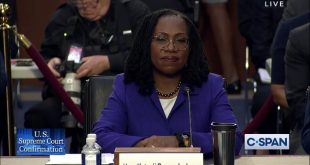Let’s talk political science, specifically ranked-choice voting. We do so not for intellectual interest, however. For this newest reform mania has gained steam through the Democratic Knowledge Project at Harvard and elsewhere and has important implications for political life. While the Democratic Knowledge Project bears importantly upon the growing need for civic education and has great promise for the improvement of education K-12 in the United States, its interest in ranked-choice voting points in a very different direction.
So, what is ranked-choice voting? It is a technical means of avoiding the not infrequent occurrence of plurality victors in electoral contests. The first-past-the-post method of election widely practiced in the United States typically results in the election of a candidate to office with less than a majority of the vote cast. The winner, therefore, is the choice of a plurality (the largest number but short of a majority) of the electoral body. Ranked-choice voting, by contrasts, promotes voting by listing choices in lexical order, most to least in preference. After the votes are cast, the first candidate to emerge with a majority of most preferred or first choice votes is declared the winner and the representative of the majority. Typically, no candidate will have a majority of first choice votes in an initial tally, following which the votes of the least preferred are eliminated, and the votes of the second, third and so forth choices are tallied, the process continuing until enough votes fall on the chosen one to constitute a majority of first, second, third, and so forth in order of preference until the tally ends.
This phenomenon has long teased theorists and activists anxious to produce clear-cut majority choices to drive the policy process in democratic governance. Earlier in the 20th century many hoped that proportional representation would solve the problem, with or without associated parliamentary party representation. The idea behind that approach was to give every not insignificant expression of opinions, passions, and interests a voice in the policy making process. Those reforms have failed in two important dimensions, however. First, they have undermined political stability in general and, second, they still cannot capture what might best be called eccentric opinions, passions, and interests without imperiling the coalition building process often necessary in proportional systems.
Prior to the 20th century, the political party was invented to solve the same problem – namely, organizing majority sentiment to determine the nation’s direction. At each step in this engineering process to construct a clear-cut majority, a singular reality has prevailed, and against which all the reform efforts have been doomed to founder even when approximating coherent public sentiment. That reality is the intrinsically fragmentary nature of the social body.
Every social body is fragmented into diverse parts based on the diversity of opinions, passions, and interests present within it, but that there is always one grouping larger – though less than a majority – than all the others. That larger grouping is a social plurality (albeit not necessarily a civic plurality). If the social plurality is coherent and stable, it will always win first-past-the-post elections. The reality, however, is that it is never so coherent and stable, mainly because of cross-cutting opinions, passions, and interests, and the more so as the civic body is larger.
What, then, accounts for election dynamics? In fact, what happens is that the social plurality meets competition in the form of a large though smaller social minority, and both the plurality and the minority are surrounded by ever shifting social fragments belonging neither to the one or the other. These lesser fragments are ions in the body politic. In the electoral context, these shifting social fragments exercise a greater influence than their numbers, for they easily become what the political scientists call the “marginal voters.” That expression means that where the votes of the social fragments or “little platoons” go, more often than not so goes the majority (barring a holy alliance between the plurality and the minority, which can happen but only rarely happens). The marginal voter, therefore, is king-maker in democratic politics.
This, then, is the point and effect of ranked-choice voting – to eliminate the king-making role of the marginal voter and, therefore, the factor of populist surprise in elections. One can discern this in the New Zealand, San Francisco, and Oregon experiments now well under way. But one sees the effect still more dramatically in the “open primary” process in California, which is a tacit form of ranked-choice voting. The result of an effective one-party government is precisely the effect aimed at in ranked-choice voting – i.e., stability and coherence mean primarily the establishment of a political orthodoxy capable of sustaining itself for a length of time.
Another example of the effect of this tendency appears from the blithe assumptions of voting rights reformers in the 1970s and 1980s, which unintentionally fell into the trap of a practical equivalent to ranked-choice voting when they insisted on increasing minority representation in legislative bodies by means of concentrating minority voters in single district jurisdictions (as opposed to exposing them to the politics of at-large elections). The unintended consequence of this was to foster increased Republican representation in the same legislative bodies, by removing marginal voters from the constituencies in which Republicans were most competitive. Thus, those usually court-imposed reforms entrenched Republican control even while increasing minority representation. After I carefully explained these dynamics in multiple voting rights litigations the reformers reversed course and no longer so carelessly adopted nostrums without thinking through political implications.
Ranked-choice voting is such a nostrum, the effects of which will be not to stabilize the social body but, rather, by entrenching a dominant tendency, to isolate and alienate social fragments that will only be able to seek political expression outside of established institutions and pathways.
Photo credit: justgrimes (Creative Commons) – Some rights reserved
Dr. William B. Allen is Emeritus Dean of James Madison College and Emeritus Professor of Political Science at Michigan State University and has been a member of the Mackinac Center Board of Scholars since 1995. Currently, he is a Veritas Fund Senior Professor in the Matthew J. Ryan Center for the Study of Free Institutions and the Public Good at Villanova University and also a Visiting Professor in History and American Government at the Ashbrook Center at Ashland University. Previously, he taught at Harvey Mudd College in Claremont, California. He earned his Ph.D. in Government from the Claremont Graduate University.
 Black Community News News and Commentary for Christians
Black Community News News and Commentary for Christians



